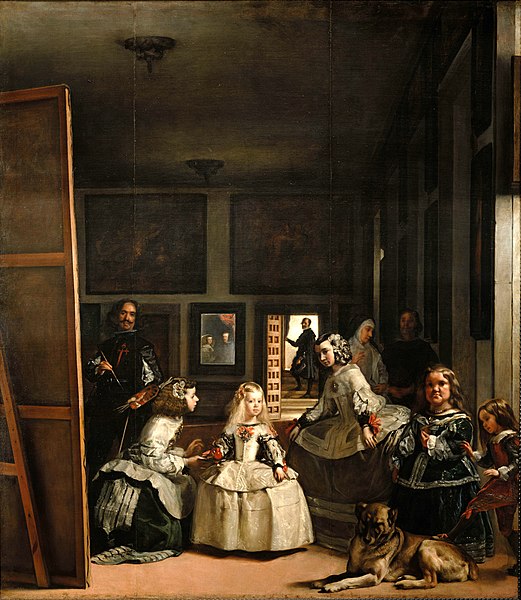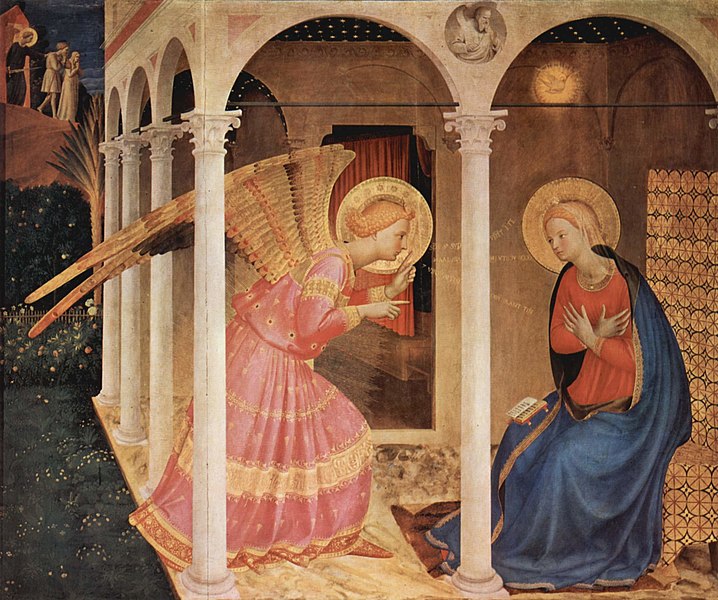All AP Art History Resources
Example Questions
Example Question #452 : Renaissance To Contemporary 2 D Art
The Florentine noble family whose members were patrons of artists like Michelangelo, Leonardo da Vinci, and Botticelli were the __________.
Machiavellis
Borgias
Habsburgs
Medicis
Medicis
The Medicis were a banking family who gained power in Florence during the fifteenth century and held sway for over two hundred years in the Northern Italian city state. While controlling the wheels of state, the Medicis were also important patrons of important Renaissance artists, making great strides in art possible in the sixteenth century. In particular, artists like Leonardo da Vinci, Michelangelo, and Botticelli were only able to make the works they did because of the protections of the Medicis.
Example Question #59 : Seventeenth And Eighteenth Century 2 D Art
The Italian artist Caravaggio is most closely associated with __________.
the Romantic era
Neoclassicalism
the Baroque era
the Medieval era
the Baroque era
Caravaggio (1571-1610) built on earlier Renaissance paintings that used naturalistic poses and deep use of contrast and color, but pushed them into almost new forms. Caravaggio focused on emotional themes through natural pose and extremely sharp contrasts between dark and light elements in his paintings. These refinements were key to the development of the Baroque style of the seventeenth century.
Example Question #51 : Seventeenth And Eighteenth Century 2 D Art
The artists who created each of these paintings were __________.
Dutch
Italian
English
French
Dutch
These paintings are two classic examples of Dutch painting from the seventeenth century: Figure 3 presents The Night Watch by Rembrandt van Rijn (1642), and Figure 4 shows The Astronomer by Johannes Vermeer (1668). Both exhibit typical features of Dutch golden age painting, including strong contrasts and vivid colors, which are used to portray important Dutchmen of the day.
Figure 3: The Night Watch by Rembrandt van Rijn (1642)
Figure 4: The Astronomer by Johannes Vermeer (1668)
Example Question #451 : Renaissance To Contemporary 2 D Art
The painting shown in Figure 3 portrays __________.
town leaders
a band of militiamen
knights
a group of religious initiates
a band of militiamen
The men in the foreground of Rembrandt van Rijn's The Night Watch all carry muskets and wave banners, indicative of militia soldiers in the seventeenth century. The captain, Frans Banning Cocq, was an actual leader of a militia, and Rembrandt intentionally captured his company. It was also intentional on the artist's part to show their supporters behind them.
Figure 3: The Night Watch by Rembrandt van Rijn (1642)
Figure 4: The Astronomer by Johannes Vermeer (1668)
Example Question #452 : Renaissance To Contemporary 2 D Art
The painting shown in Figure 2 was created around __________.
1700
1750
1800
1650
1800
Francisco de Goya became the court painter to King Charles IV of Spain in the 1790s, and made many portraits of the royal family until Napoleon invaded Spain in 1808. This painting, Charles IV of Spain and His Family, was made in 1801, and shows a dynasty trying to keep itself together.
Figure 1: Las Meninas by Diego Velázquez (1656)
Figure 2: Charles IV of Spain and His Family Francisco de Goya (1801)
Example Question #453 : Renaissance To Contemporary 2 D Art
The image shown in Figure 4 was influenced by __________.
Jansenism
the Spanish Inquisition
Puritanism
the Counter-Reformation
the Counter-Reformation
After the German priest Martin Luther inaugurated the Protestant Reformation in 1519, the Roman Catholic Church made various attempts to reinforce itself. In the mid-sixteenth century, the Counter-Reformation came about, during which Catholicism sought to address the criticisms of the Protestant Reformation while remaining loyally Catholic. Carvaggio's painting of the disciples encountering the risen Jesus at Emmaus is emblematic of this trend, as the work shows shows a realistic, devotional, and personal religion that nonetheless has a focus on mysticism and traditional Church doctrine.
Figure 3: The Annunciation (Cortona) by Fra Angelico (1433)
Figure 4: Supper at Emmaus (Milan) by Caravaggio (1606)
Example Question #61 : Seventeenth And Eighteenth Century 2 D Art
Rembrandt van Rijn most frequently painted subjects from __________.
the Bible
ancient mythology
ancient history
royal courts
the Bible
Rembrandt van Rijn, like other Dutch Masters of the seventeenth century, painted different images from other European painters, thanks to the Netherlands' unique religious and political situation. As a Protestant-majority nation that was ruled by the Spanish monarch, court paintings, images of Roman antiquity, and classical mythology were unpopular subjects among the Dutch in the seventeenth century. As such, the most popular subjects for Rembrandt were scenes from the Bible, especially the New Testament.
Example Question #62 : Seventeenth And Eighteenth Century 2 D Art
"Lapis lazuli" is the name for a stone that, when crushed into a powder, produces a paint with a vivid shade of __________.
green
yellow
red
blue
blue
The lapis lazuli stone was mined in Afghanistan and Pakistan since the seventh millennium BCE. In the early Renaissance, it was finally imported to Europe, where the paint produced from lapis lazuli from the stone became highly valued. This paint was widely used in Renaissance art for the blue robe of the Virgin Mary; it is also widely associated with the Dutch painter Johannes Vermeer.
Example Question #461 : Renaissance To Contemporary 2 D Art
Baroque and Impressionist artists have all of the following in common except __________.
the creation of portraits
an interest in the movement and representation of light
the use of scenes from contemporary life
an interest in portraying overtly religious subjects
that they emerged in European countries
an interest in portraying overtly religious subjects
Impressionists had less of an interest in painting works with religious themes while Baroque artists often engaged with these themes. Impressionism emerged in France while Baroque art gained popularity across Western Europe. Both Impressionists and Baroque artists had an interest in portraiture and the everyday world. Both kinds of artists showed an interest in capturing light on the canvas.
Example Question #462 : Renaissance To Contemporary 2 D Art
Which of the following is true about Peter Paul Rubens’ Allegory of the Outbreak of War?
Venus is represented as a fury of war
It reflects Peter Paul Rubens’ limited travel experience and his insular focus on Flanders’ point of view in military conflicts
It expresses Rubens’ negative attitude towards war and was painted in protest of the Thirty Years War and other conflicts
It was commissioned by Ferdinando II, Grand Duke of Tuscany, to celebrate his bravado in war
It was painted to protest the Netherlands’ wars of independence from Spain
It expresses Rubens’ negative attitude towards war and was painted in protest of the Thirty Years War and other conflicts
Rubens derived great insight into European politics from his diplomatic missions, and never ceased to promote peace. He used Allegory of the Outbreak of War to express his horror at the Thirty Years War and promote his message of peace.
All AP Art History Resources










